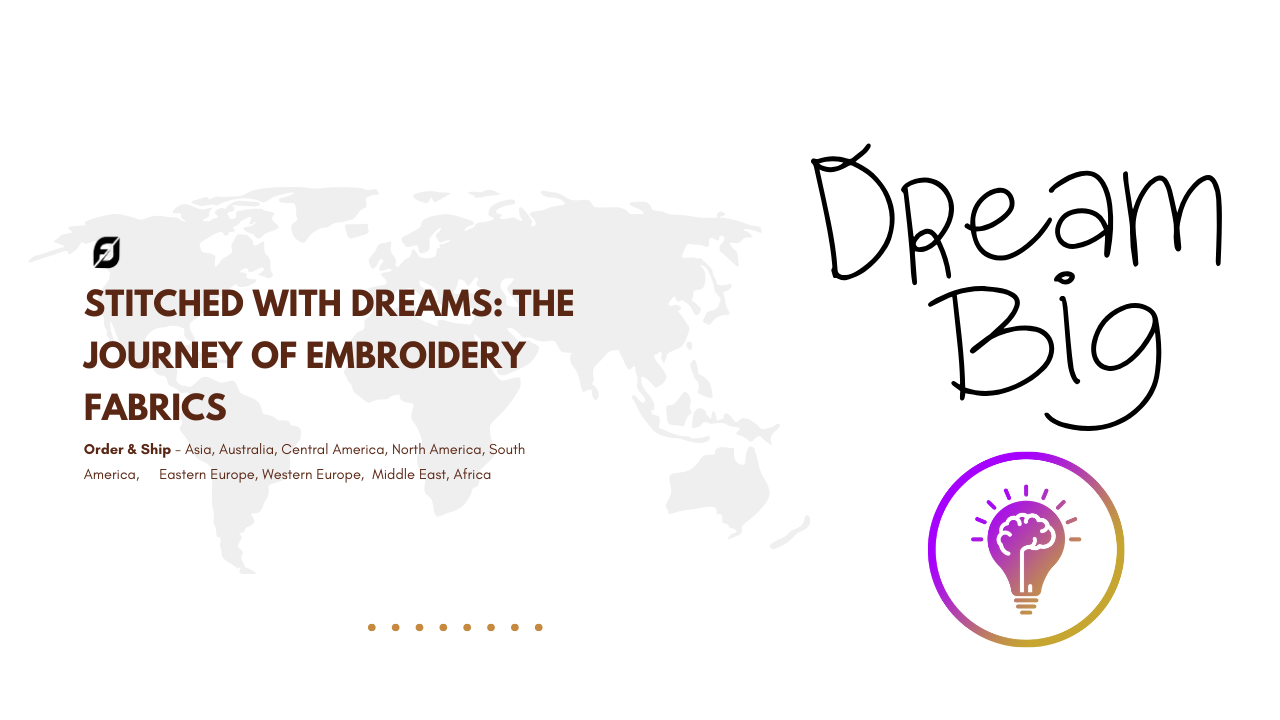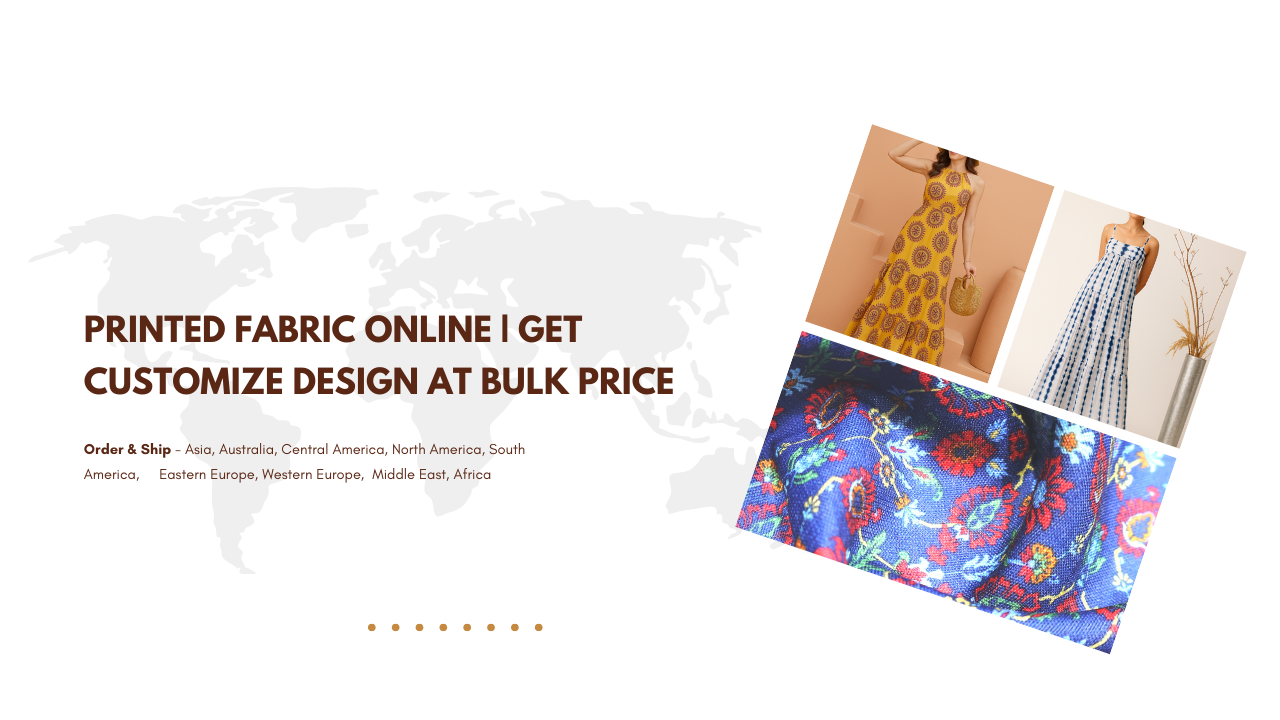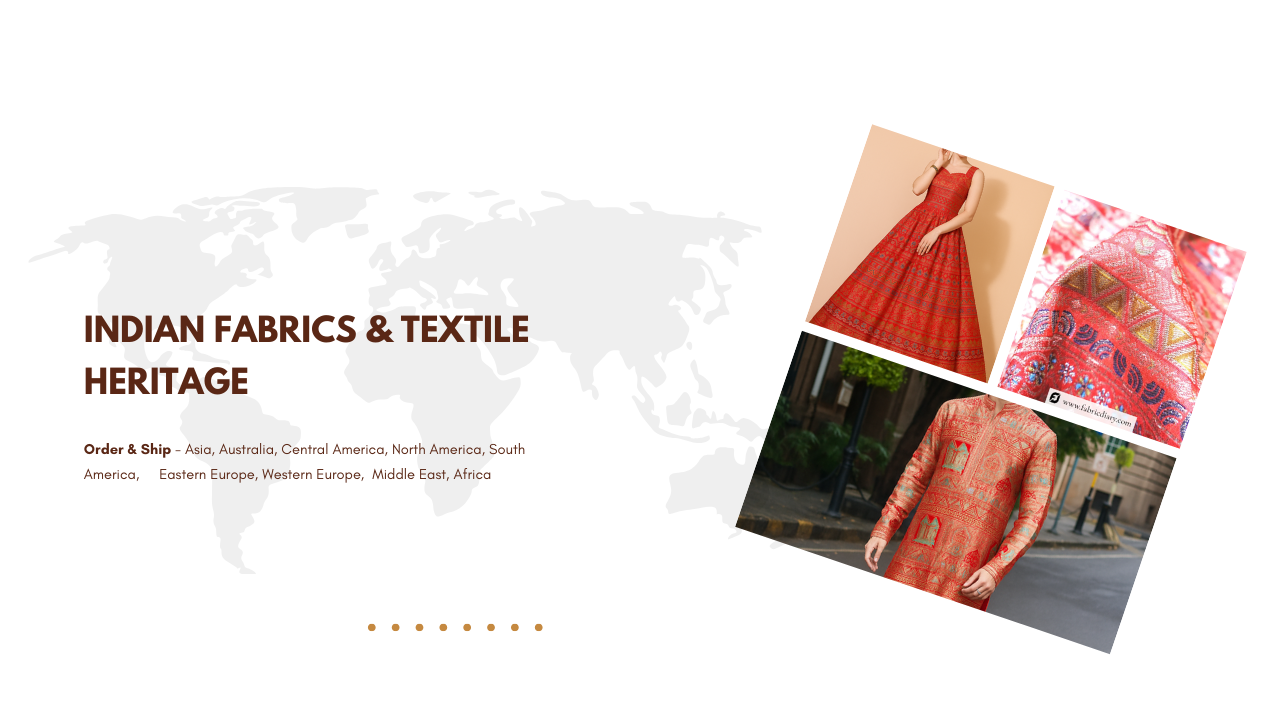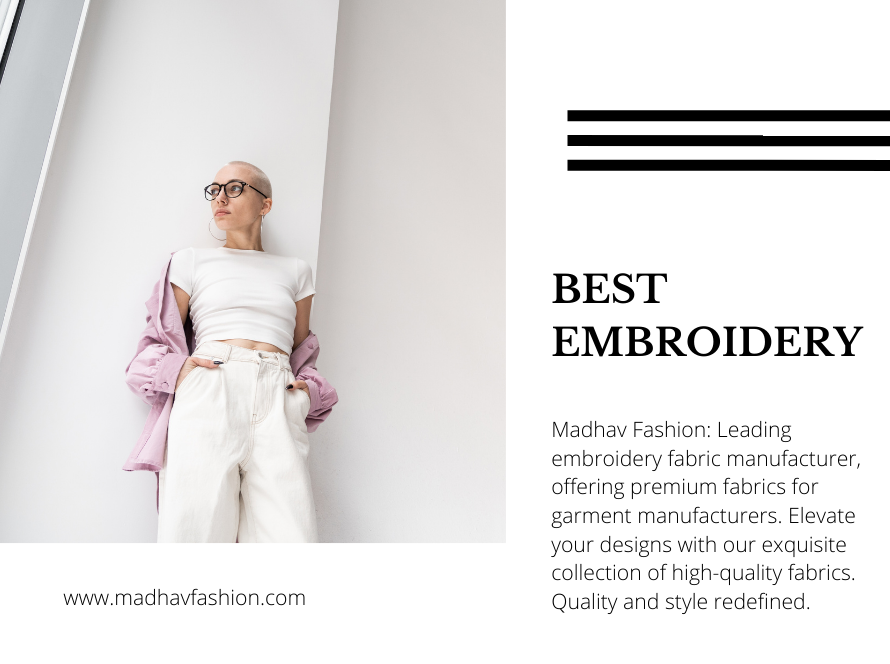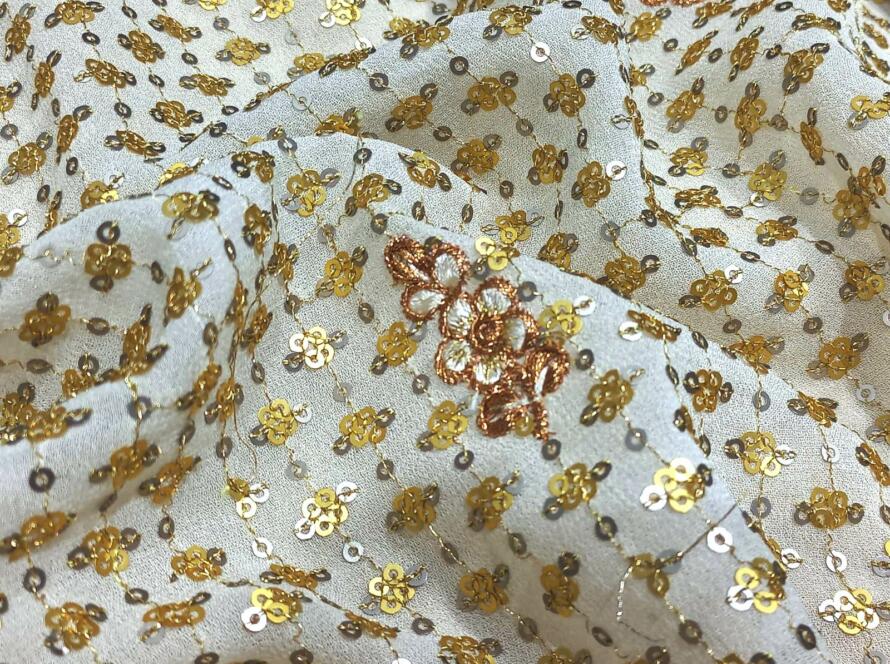Embroidered lace fabric is a symbol of sophistication, intricacy, and timeless beauty. This fabric combines the delicate charm of lace with the artistry of embroidery, creating a textile that has been cherished for centuries.
Whether used in haute couture, bridal wear, home décor, or accessories, embroidered lace remains a staple in the fashion and textile industry.
Designer Embroidery Fabric for Boutiques: The Ultimate Guide for Global Fashion Leaders
What is Embroidered Lace Fabric?
Embroidered lace-fabric is created by stitching intricate designs onto a lace base using fine threads, beads, sequins, or other embellishments.
Unlike plain lace, which is woven in open patterns, embroidered lace features decorative patterns that add depth and dimension. The embroidery can be done by hand or machine, depending on the level of detail and craftsmanship required.
History and Cultural Significance
Lace originated in Europe during the Renaissance, with Italy and France being at the forefront of its production. Over time, lace embroidery techniques evolved, influencing different styles such as:
- French Chantilly Lace — Known for its fine net background and floral motifs.
- Venetian Lace — Characterized by raised embroidery and elaborate details.
- Guipure Lace — A heavier lace with bold patterns, often used in high-fashion gowns.
Lace fabric became a status symbol among royalty and aristocracy, often used in gowns, veils, and home interiors. Today, embroidered lace remains a favorite in luxury fashion and décor.
How is Embroidered Lace Fabric Made?
The production of Embroidered lace-fabric involves multiple steps that require precision and artistry:
- Selection of Base Fabric — The foundation can be made of tulle, mesh, organza, or cotton lace, providing a delicate yet durable structure.
- Embroidery Design Creation — Designers create intricate patterns, including floral, geometric, or abstract motifs.
- Stitching and Embellishment — Threads, beads, sequins, and pearls are stitched onto the lace using either hand embroidery or high-precision embroidery machines.
- Finishing and Cutting — Once the embroidery is complete, the fabric is trimmed, shaped, and sometimes dyed to match specific design needs.
Key Features of Embroidered Lace Fabric
- Intricate Detailing — The combination of lace and embroidery creates a sophisticated, high-end look.
- Lightweight and Breathable — Despite its rich appearance, lace remains comfortable and airy.
- Sheer and Layered Effects — Embroidered lace can be layered over solid fabrics for a luxurious texture.
- Versatile Designs — Available in floral, vintage, modern, and abstract patterns for diverse applications.
Popular Uses of Embroidered Lace Fabric
- Bridal and Evening Wear — Used extensively in wedding gowns, veils, lehengas, and cocktail dresses.
- Casual and Designer Fashion — Incorporated into skirts, blouses, and jackets for an elegant touch.
- Lingerie and Sleepwear — Enhances sensuality in delicate undergarments and robes.
- Home Décor — Adds sophistication to curtains, table linens, cushion covers, and bedspreads.
- Accessories and Footwear — Seen in handbags, scarves, and even designer shoes.
How to Care for Embroidered Lace Fabric
- Hand Wash or Dry Clean Only — Avoid machine washing, as it can damage the embroidery.
- Use Mild Detergents — Harsh chemicals can weaken the lace and fade colors.
- Avoid Excessive Sunlight — Prolonged exposure can cause discoloration.
- Store with Care — Keep folded in tissue paper to prevent snagging and tearing.
Why Embroidered Lace Fabric is a Fashion Favorite
The versatility, elegance, and intricate craftsmanship of Embroidered lace-fabric make it a top choice for designers and consumers alike. It seamlessly blends vintage charm with modern fashion trends, ensuring its continued popularity.
Whether it’s a wedding gown, a designer dress, or an elegant home accent, Embroidered lace-fabric is a timeless treasure that adds beauty and sophistication to any creation.
_______________________________
What is embroidered lace fabric and how is it different from regular lace?
Embroidered lace fabric is a delicate textile that features intricate embroidery work stitched onto a lace base, enhancing its beauty and texture. Unlike regular lace, which is created through a weaving or knitting process to form open patterns, embroidered lace incorporates decorative stitches, adding depth, dimension, and embellishments like beads, sequins, or metallic threads.
Regular lace is often plain with a uniform design, whereas embroidered lace offers more elaborate and artistic details. The embroidery process allows for custom patterns, such as floral motifs, geometric shapes, or even personalized designs. This makes embroidered lace more luxurious and visually striking compared to traditional lace.
Embroidered lace fabric is commonly used in bridal wear, evening gowns, lingerie, and home décor. It provides a more sophisticated and high-end look, making it a favorite among designers. Additionally, embroidered lace can be crafted using various techniques, including hand embroidery for premium designs or machine embroidery for mass production.
Due to its enhanced detailing and craftsmanship, embroidered lace is often priced higher than standard lace, but its elegance and unique appeal make it worth the investment for special occasions and high-fashion garments.
How is embroidered lace fabric made?
Creating Embroidered lace-fabric is a meticulous process that requires expertise and precision. The production involves several key steps:
- Selecting the Base Fabric: A sheer or semi-sheer fabric like tulle, organza, mesh, or cotton lace is chosen as the foundation for embroidery.
- Design Creation: Designers create intricate motifs using floral, geometric, or vintage patterns.
- Embroidery Application: Using hand embroidery or high-tech machines, threads, sequins, beads, and metallic accents are stitched onto the lace.
- Finishing Touches: The fabric is trimmed, softened, and sometimes dyed for final enhancements.
Hand-embroidered lace is highly valued for its craftsmanship, while machine embroidery offers more consistency and affordability. The choice between the two depends on the intended use and budget.
What are the different types of embroidered lace fabric?
Embroidered lace fabric comes in various styles, each with unique characteristics:
- Chantilly Lace: Features fine, delicate embroidery with floral patterns.
- Guipure Lace: A heavier lace with dense, raised embroidery and no mesh background.
- Venetian Lace: Known for its baroque-style raised embroidery, often used in couture.
- Alençon Lace: A French lace with bead embellishments, perfect for wedding dresses.
- Corded Lace: Features raised threadwork outlining the embroidery, adding texture.
- Tulle Embroidered Lace: Lightweight and sheer, often used in veils and overlays.
Each type of embroidered lace serves different fashion and décor needs, from bridal wear to high-end furnishings.
What are the best uses of embroidered lace fabric?
Embroidered lace fabric is widely used across multiple industries:
- Bridal Fashion: Wedding gowns, veils, and bridal accessories.
- Evening and Party Wear: Elegant dresses, sarees, blouses, and designer skirts.
- Casual and Office Wear: Lace tops, jackets, and overlays for a chic touch.
- Lingerie and Nightwear: Delicate lace embroidery enhances feminine appeal.
- Home Décor: Lace table runners, curtains, cushion covers, and bedsheets.
- Accessories: Embroidered lace is seen in handbags, gloves, scarves, and even footwear.
Its versatility allows embroidered lace to be used in both fashion and interior design, adding elegance wherever it’s applied.
Is embroidered lace fabric durable and long-lasting?
Embroidered lace fabric is delicate yet surprisingly durable when handled with care. The longevity depends on factors such as:
- Fabric Quality: High-quality lace with strong embroidery lasts longer.
- Maintenance: Proper cleaning, storage, and gentle handling extend its life.
- Usage: Occasional wear (e.g., wedding dresses) keeps it in good condition, while frequent use may cause wear and tear.
To ensure durability, avoid rough washing, direct sunlight exposure, and excessive stretching.
How should embroidered lace fabric be washed and maintained?
Proper care is crucial to maintain the beauty of embroidered lace:
- Hand Wash or Dry Clean Only: Machine washing can damage the embroidery and fabric.
- Use Mild Detergents: Harsh chemicals weaken the threads.
- Avoid Excessive Rubbing: Gently press the fabric instead of scrubbing.
- Air Dry Flat: Hanging lace can cause stretching and misshaping.
- Store in a Cool, Dry Place: Fold it carefully in tissue paper to prevent snagging.
Following these steps ensures that embroidered lace fabric remains pristine for years.
Can embroidered lace fabric be dyed or customized?
Yes! Embroidered lace fabric is highly customizable. It can be dyed in various shades, depending on the material used for embroidery. Cotton-based lace absorbs dye well, while synthetic lace may require special dyes.
Customization options include:
- Color Variations: From pastels to bold hues.
- Pattern Modifications: Designers can create exclusive embroidery designs.
- Embellishments: Adding pearls, sequins, or metallic threads for a personalized touch.
Many bridal and couture designers offer custom embroidered lace to match specific themes and styles.
Is embroidered lace fabric expensive?
The cost of embroidered lace fabric varies based on:
- Material: Silk and cotton lace are pricier than synthetic lace.
- Embroidery Complexity: Hand-embroidered lace is more expensive than machine-made.
- Brand and Origin: French and Italian laces are among the most costly.
- Embellishments: Additional beads, pearls, or sequins increase the price.
High-end embroidered lace fabrics are used in luxury fashion, but affordable options are also available for everyday wear.
Why is embroidered lace fabric so popular in bridal and couture fashion?
Embroidered lace fabric is a timeless choice in bridal and couture fashion due to its:
- Romantic and Feminine Appeal: The delicate embroidery adds grace and charm.
- Customizability: It can be tailored to any design or color scheme.
- Luxurious Look: Lace embroidery enhances elegance and sophistication.
- Versatile Styling: It complements various silhouettes, from ball gowns to mermaid dresses.
Brides and designers prefer embroidered lace for its intricate beauty and ability to create stunning, unique wedding attire.
Embroidered lace fabric remains a staple in high fashion, bridal wear, and interior décor. Its delicate craftsmanship, versatility, and timeless appeal make it a cherished textile across generations. Whether used for wedding dresses, elegant outfits, or home décor, embroidered lace adds a touch of sophistication and luxury that never goes out of style.


